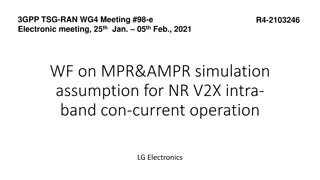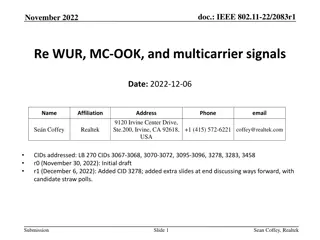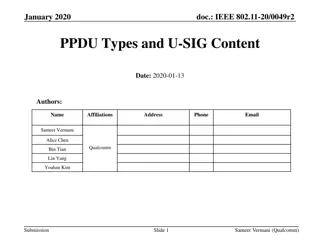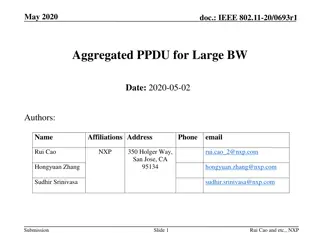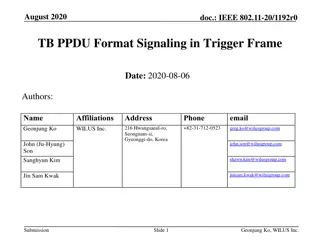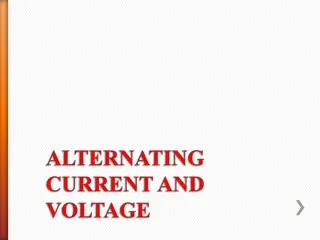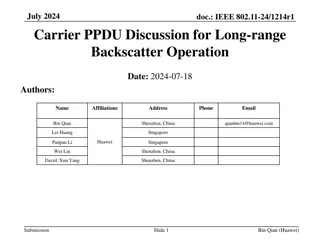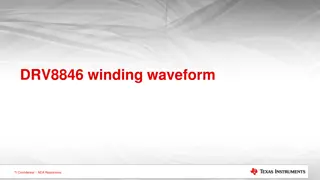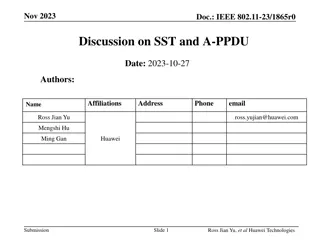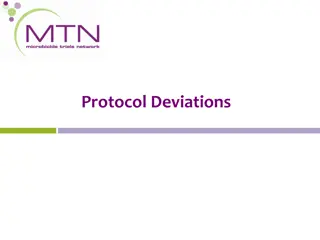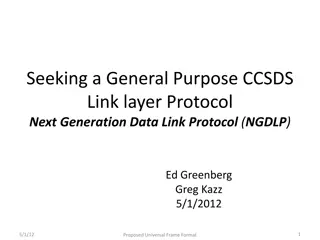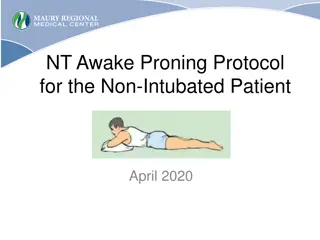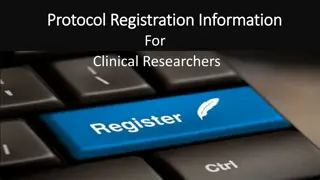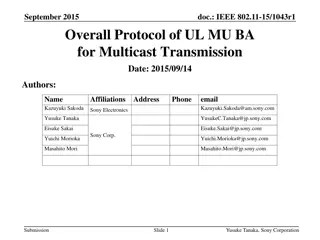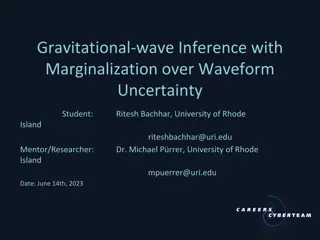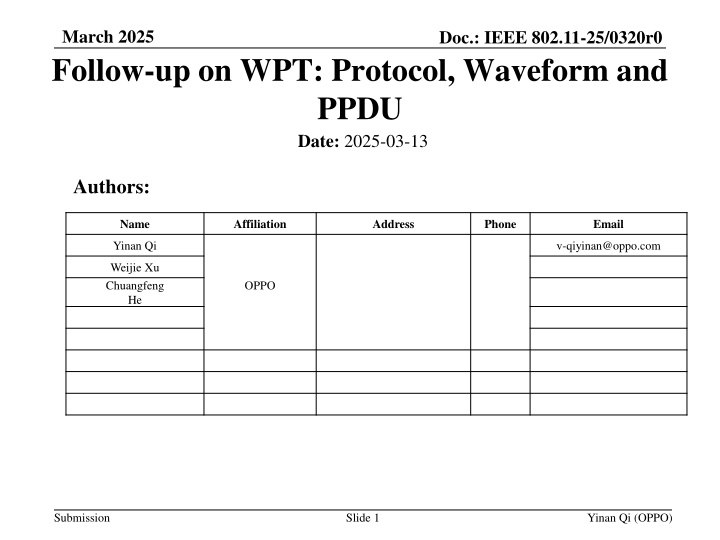
IEEE 802.11-25 Follow-up on WPT Protocol and PPDU
In this contribution for IEEE 802.11-25, the discussion revolves around Wireless Power Transfer (WPT) protocol aspects like the communication between energizer and AMP device, co-existence of WPT signals, reporting mechanisms for non-AP STAs, and co-existence challenges with other systems. Key points cover long-term vs. short-term feedback, joint vs. individual reporting, and co-existence scenarios with other 802.11 systems and non-WiFi systems.
Download Presentation

Please find below an Image/Link to download the presentation.
The content on the website is provided AS IS for your information and personal use only. It may not be sold, licensed, or shared on other websites without obtaining consent from the author. If you encounter any issues during the download, it is possible that the publisher has removed the file from their server.
You are allowed to download the files provided on this website for personal or commercial use, subject to the condition that they are used lawfully. All files are the property of their respective owners.
The content on the website is provided AS IS for your information and personal use only. It may not be sold, licensed, or shared on other websites without obtaining consent from the author.
E N D
Presentation Transcript
March 2025 Doc.: IEEE 802.11-25/0320r0 Follow-up on WPT: Protocol, Waveform and PPDU Date: 2025-03-13 Authors: Name Affiliation Address Phone Email Yinan Qi v-qiyinan@oppo.com Weijie Xu Chuangfeng He OPPO Submission Slide 1 Yinan Qi (OPPO)
Doc.: IEEE 802.11-25/0320r0 March 2025 Abstract In this contribution, we discuss the following issues: o WPT protocol between energizer and AMP device o Co-existence of WPT signals Submission Slide 2 Yinan Qi (OPPO)
March 2025 Doc.: IEEE 802.11-25/0320r0 Recap of Progress Agreement: IEEE 802.11bp defines a mechanism that allows an AMP non-AP STA to report its energy harvesting and power related information to AMP AP STA. The parameters that are included in the report and how to report such information is TBD. Energizer can potentially transmit other signals, e.g., preamble, wake- up signal, etc. Two main challenges o How does the AMP STA report to the AP? o What information should be conveyed in this report? Submission Slide 3 Yinan Qi (OPPO)
March 2025 Doc.: IEEE 802.11-25/0320r0 WPT Protocol: AMP non-AP STA Reporting Long-term/non-periodic v.s. short-term/periodic feedback Long-term/non-periodic feedback info Less frequent, sometimes only once Can be done at the beginning of communication or upon the request of the AP Information such as EH related information, energy storage related information, etc. Short-term/periodic feedback info More frequent and can be real time In formation such as power status/requirements o o Submission Slide 4 Yinan Qi (OPPO)
March 2025 Doc.: IEEE 802.11-25/0320r0 WPT Protocol: AMP non-AP STA Reporting Joint reporting v.s. individual reporting Joint reporting Less signalling overhead and less energy consumption Power category can jointly indicate the power status of the AMP non-AP STAs [1] Individual reporting High signalling overhead and high energy consumption o Joint reporting can be baseline and individual reporting can be optional and only reported when necessary. o o Submission Slide 5 Yinan Qi (OPPO)
March 2025 Doc.: IEEE 802.11-25/0320r0 WPT PPDU: Co-existence Issue Two co-existence cases o Co-existence between WPT signals should be allowed No interference issue Maybe even beneficial with mutual enhancement o Co-existence between WPT signals and other 802.11 systems on S1G, e.g., 802.11ah, or even non-WiFi S1G systems, e.g., Smart Utility Networks, Low Energy, Critical Infrastructure Monitoring, etc. May cause heavy interface since the high Tx power of WPT to reach the AMP devices Submission Slide 6 Yinan Qi (OPPO)
March 2025 Doc.: IEEE 802.11-25/0320r0 WPT Procedure AP can coordinate the WPT procedure and control the Tx of WPT signal from the energizers. Challenge: AP may not be able to reserve S1G channel for WPT Energizer needs to do LBT by itself on S1G The energizer can do ED first. In the case of collision, the energizer needs to keep listening to the channel. If a preamble is detected, the energizer knows the signal is WPT signal and it can transmit its own WPT signal. Otherwise, it no preamble is detected, the energizer assumes the signal in the air is communication signal and does backoff. Design WPT signal that can be fully or partially understood by the energizer WPT preamble. o o o Submission Slide 7 Yinan Qi (OPPO)
March 2025 Doc.: IEEE 802.11-25/0320r0 Reference [1] AMP Device Power Status, IEEE 802.11-24/1381r0, Aug. 2024 Submission Slide 8 Yinan Qi (OPPO)
March 2025 Doc.: IEEE 802.11-25/0320r0 SP1 Do you agree to capture the following text to TGbp SFD? o AMP devices shall support joint reporting of energy and power related information, e.g., power status, to the AP during activation or upon the request of the AP? The details on how to define power status are TBD Submission Slide 9 Yinan Qi (OPPO)
March 2025 Doc.: IEEE 802.11-25/0320r0 SP2 Do you agree to capture the following text to TGbp SFD? o WPT signals are allowed to overlap with each other. Submission Slide 10 Yinan Qi (OPPO)
March 2025 Doc.: IEEE 802.11-25/0320r0 SP3 Do you agree to capture the following text to TGbp SFD? o 11bp specifies, in S1G, WPT PPDU format with at least a preamble and a charging field? Submission Slide 11 Yinan Qi (OPPO)


